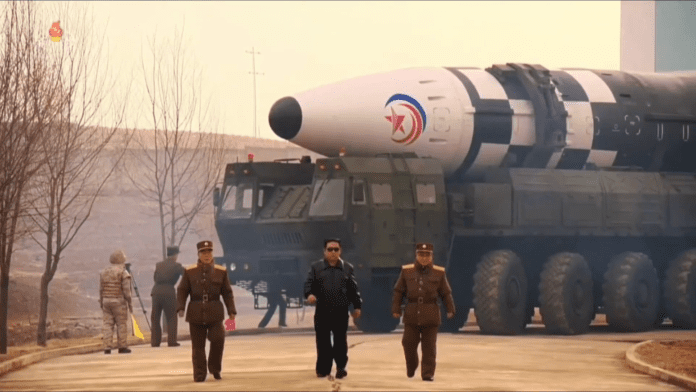The article was originally published by the Chosun Ilbo and translated by OKN Correspondent.
North Korea launched a total of 33 missiles through its 17 launches this year, including intercontinental ballistic missiles (ICBMs), costing it 400 million to 650 million dollars. This amount of money could vaccinate more than 25 million North Koreans or cover almost all the food that they are short of this year.
According to data submitted by the Korea Institute for Defense Analyses (KIDA), a research institute under the Ministry of Defense, to Representative Shin Won-sik of the ruling People Power Party on June 8, North Korea fired six ICBMs, one mid-range missile (Hwaseong-12), and 26 short-range missiles, including the KN-23 ballistic missile, which is similar to the Russian Iskander missile. According to the KIDA, the total cost of launching these missiles is estimated to be between 400 million and 650 million dollars. This is a combination of material costs (50-80 percent of the total), labor costs (10-30 percent), and other costs (10-20 percent). In the case of the ICBM, it is believed that the Hwaseong-17 type (5 launches), which is often called the world’s largest “monster ICBM,” and Hwaseong-15 type (1 launch), which was also launched in November 2017, were launched this year.
According to the KIDA, the cost of one missile launch was estimated at 25 billion won (19.4 million dollars) to 37.5 billion won for the ICBM, 12.5 billion to 37.5 billion won for medium-range missiles, and 3.8 billion to 6.3 billion won for short-range missiles. North Korea has been intensively launching new missiles developed since 2017 starting earlier this year. This is the first time that a South Korean- government affiliated agency has disclosed the cost of launching such missiles. In the past, the military and intelligence authorities estimated the cost and disclosed it to the media whenever North Korea went ahead with missile launches and nuclear tests, but there was no such attempt under the Moon Jae-in government for five years.
The price range of Scud and Nodong, which used to be North Korea’s main missile systems, were known to be between 1 billion won and 2 billion won. However, the price of the new ICBM and Hwaseong-12, and other newer short-range missiles and other rocket launchers such as KN-23, KN-24, KN25, and others was not known. Some institutions estimate that one North Korean ICBM costs 26.6 billion won, including the propellant (12.5 billion won), the engine (6 billion won), the guide device (100 million won), the rocket fuselage (3 billion won), and others (5 billion won).
Rep. Shin Won-sik’s office said that North Korea could have purchased 20 million to 32.5 million doses of the Pfizer vaccine (based on a $20 per dose calculation) if the money used for the missile launches this year was spent on vaccines. The office added that this number of doses could have been enough to vaccinate all North Korean citizens. Additionally, Shin said that 510,000 to 840,000 tons of food (rice) could be purchased at the Pyongyang market price with the spending on the missile launches. The office added that this could cover almost all of North Korea’s food shortage for this year of 860,000 tons (U.S. CIA estimate).
“Through this kind of analysis, we should spread the perception to North Koreans that they are sick and hungry due to Kim Jong-un’s wrong political decisions,” Shin said. “Some of our society should get away from the wrong thinking that we should take North Korean provocations for granted or help North Koreans even though they are suffering from wrong policy decisions.”


